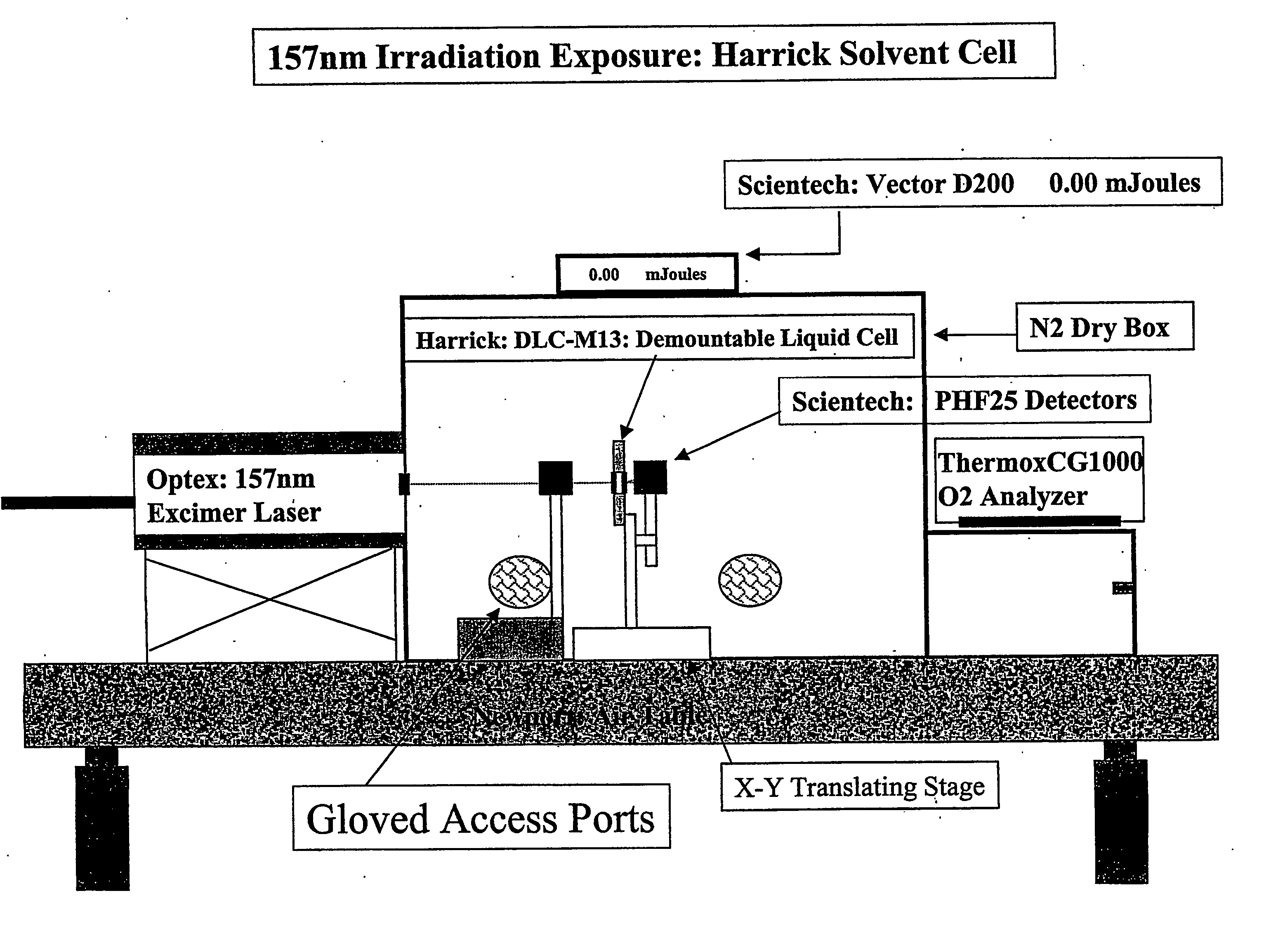Radiation durable organic compounds with high transparency in the vaccum ultraviolet, and method for preparing
- Summary
- Abstract
- Description
- Claims
- Application Information
AI Technical Summary
Benefits of technology
Problems solved by technology
Method used
Image
Examples
example 3
[0140] Liquid sample cells having CaF2 windows spaced 6 micrometer and 25 micrometer apart were used. Transmitted light intensities were measured with the cells filled with H-Galden® ZT 85. H-Galden® ZT 85 was found have A / μm=0.0037 at 157 nm.
[0141] A sample of H-Galden® ZT 85 which was vigorously sparged for 1 minute was loaded into a liquid sample cell with 25 micrometer spacers, and then irradiated with 6 Joules / cm2 of 157 nm radiation. This sample showed a 10% PCD lifetime of 497 Joules / cm2.
example 4
[0145] A Hastelloy tube about two feet long by 1 inch in diameter was loaded with 3A molecular sieves, placed in a 310° C. tube oven, and purged with nitrogen gas overnight. The next morning the nitrogen purge gas was first passed through a liquid nitrogen chilled trap to make sure it was reasonably dry for the remainder of the experiment. The tube furnace was then turned off and the molecular sieves allowed to return to room temperature while maintaining the purge of dry nitrogen. About 1-2 grams of dry 3A molecular sieves were poured directly out the back end of the Hastelloy tube into a one ounce sample vial already containing 10 ml of H-Galden® ZT 85 solvent. The vial was immediately capped with a rubber septum and then rolled overnight to make sure of good contact between the solvent and the 3A molecular sieves.
[0146] The H-Galden® ZT 85 sample was filtered using a 0.45 micron glass syringe filter. A sample of thus treated H-Galden® ZT 85 was loaded into a liquid sample cell w...
example 5
[0149] The methods of Example 4 were repeated again using H-Galden® ZT85. The laser irradiation was done in an initial dose of 25.4 Joules / cm2 followed by a final dose of 87.5 Joules / cm2, to produce a total dose of 113 Joules / cm2. The 10% PCD lifetime over the initial 25.4 Joule dose was 868 Joule s / cm2.
[0150] The relative transmission to dose was determined as in Example 4 and is shown in FIG. 5 where M represents the same interruption in irradiation. The relative transmission to dose during the final 87.5 Joule dose was nearly constant.
PUM
| Property | Measurement | Unit |
|---|---|---|
| wavelengths | aaaaa | aaaaa |
| wavelengths | aaaaa | aaaaa |
| wavelengths | aaaaa | aaaaa |
Abstract
Description
Claims
Application Information
 Login to View More
Login to View More - R&D
- Intellectual Property
- Life Sciences
- Materials
- Tech Scout
- Unparalleled Data Quality
- Higher Quality Content
- 60% Fewer Hallucinations
Browse by: Latest US Patents, China's latest patents, Technical Efficacy Thesaurus, Application Domain, Technology Topic, Popular Technical Reports.
© 2025 PatSnap. All rights reserved.Legal|Privacy policy|Modern Slavery Act Transparency Statement|Sitemap|About US| Contact US: help@patsnap.com



